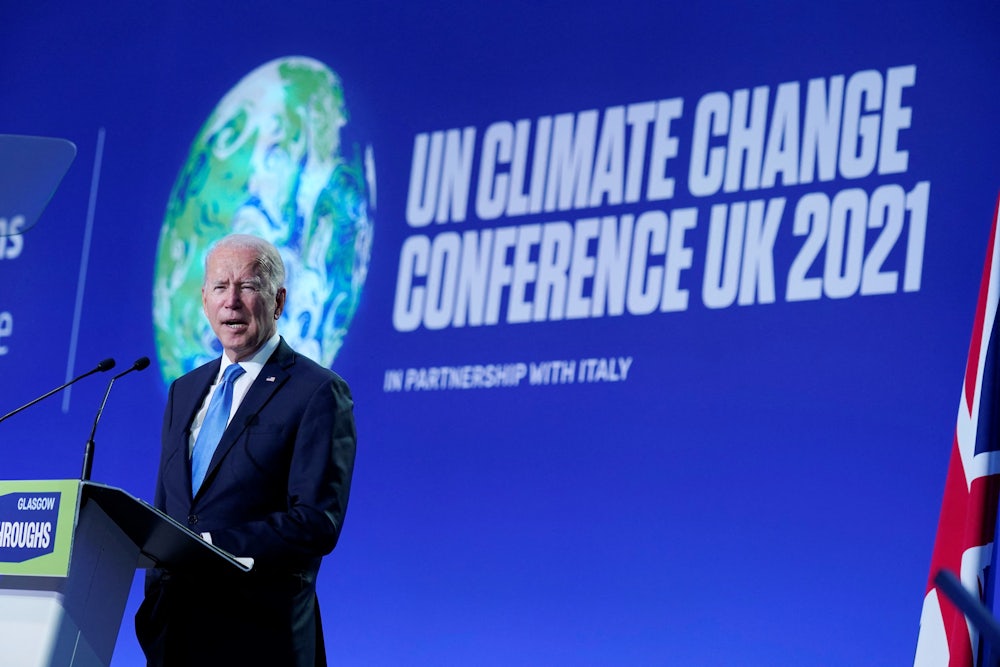In December 2008, a coal plant in Tennessee experienced a dike breach which led to the largest industrial spill North America has ever seen. In the middle of the night, more than 7.3 million tons of coal ash sludge barreled into neighboring homes and waterways. Coal ash, the toxic byproduct made from producing coal energy, is chock-full of radioactive uranium and poisonous heavy metals including arsenic, chromium, mercury, and lead.
The coal plant in question was the Kingston Fossil Plant, which is owned by the Tennessee Valley Authority, or TVA. After the dike breach, the TVA hired a Texas contractor with a history of lawsuits alleging worker endangerment to facilitate the cleanup. In an egregious violation of human health, dignity, and consent, the contractor hid the extent of the toxicity of the sludge from the workers they’d hired to do the job. The contractor refused to provide or even allow workers to use personal protective equipment, such as masks or protective suits, during the cleanup.
As a result, more than 50 people (as of August 2020) who worked to clean up the coal ash spill have died and at least 400 are seriously sick. They have experienced cancers, respiratory diseases, rare blood disorders, birth defects, high blood pressure, hormonal imbalances, nerve damage, and bleeding sores. Some family members of workers have fallen ill as well, thanks to the coal ash coming home on their loved one’s clothing and hanging in the air, on the furniture, and throughout their homes.
Where was all the “cleaned-up” coal ash from TVA’s coal plant going? To a landfill in the rural, low-income, 90 percent Black community of Uniontown, Alabama. Residents soon experienced skyrocketing health problems of their own, leading them to file a civil rights claim against Alabama officials for allowing the toxic waste to be dumped near their homes. The EPA rejected the claim in 2018.
This sounds like the plot of a depressing apocalypse movie. But it’s very real, and it all happened because a well-intended New Deal program got corrupted by an avaricious fossil fuel industry. The TVA was established by President Franklin Delano Roosevelt in 1933 as part of the New Deal. It is a federally owned, public electric utility corporation governed by a White House-appointed, nine-member board.
TVA could have been a successful, publicly accountable regional planning agency. But, from the beginning, it has hurt many of the people it is supposed to help. From its hydropower construction that harms ecosystems and human communities to its sourcing of fossil energy wreaking havoc on the climate, the TVA has not lived up to its potential. But President Joe Biden could change that. He is now the ultimate authority as to who leads the agency—and thus has an opportunity to make it work for rural America, as well as align it with his administration’s stated goal of a carbon emission–free power grid by 2035.
While the TVA is a public utility (the largest in the country), it receives no taxpayer funding and essentially operates like a for-profit firm. That means it functions much like the profit-hungry company you pay each month to keep your lights on and your home warm. The TVA currently provides electricity to 10 million people in Tennessee and parts of Alabama, Mississippi, Kentucky, Georgia, North Carolina, and Virginia.
TVA’s creation was intended to revitalize the Depression-struck Tennessee Valley region with employment opportunities and, long-term, to provide electricity generation and flood control services to the region’s residents. At the time of its creation, many people had grown distrustful of private utilities, which they felt were overcharging for power, and had warmed to the idea of public ownership of electric utilities. Roosevelt also envisioned the TVA as a renewable energy powerhouse—one that would use hydroelectric dams to produce energy. The execution of this part of the plan led to the displacement of thousands of families as the TVA was authorized to acquire lands along the Tennessee River and its tributaries for construction of any dam, reservoir, transmission line, or power plant it wanted to build. While that part of the TVA’s legacy is a cautionary tale, the vision of a bold government project generating gigawatts of clean energy and creating regional landmarks in the process is exactly the sort of thing that Democrats should remember they are capable of doing.
The TVA currently generates a measly 3 percent of the electricity it sells to local power companies and large industrial customers from renewable solar and wind energy. Meanwhile, its nonrenewable fleet is enormous—39 percent of its energy comes from nuclear energy, 26 percent from methane gas, and 21 percent from coal. The TVA plans to retire less than 25 percent of its coal fleet by 2030 and expand operations at two methane gas plants. By TVA’s own projections, it will emit over 34 million tons of carbon dioxide into the atmosphere by 2038. Thirty-four million tons—a number with no real meaning for most of us—is more than 136 countries’ annual carbon dioxide emissions. And while TVA’s emissions-reductions “plan” is to “aspire to achieve net-zero carbon emissions,” it has no specific policies or proposals to achieve this goal. For example, there’s no plan to mitigate methane emissions, which are 86 times more potent than carbon emissions during their first 20 years in the atmosphere. Where an agenda should exist, there are only empty, meaningless aspirations.
Worse, local power companies contracted with TVA have complained (and filed a legal complaint with the Federal Energy Regulatory Commission, or FERC) that TVA is blocking them from purchasing power from other suppliers. Federal law requires utilities to provide open (paid) access to their transmission system, but TVA is refusing to do so. That means local power companies that would prefer to get their energy elsewhere, and simply pay TVA to use the only transmission system in the area, are blocked from potentially lowering both energy costs and emissions.
FERC decided in a 3–1 vote that they did not have the authority to address the case and punted the issue to Congress. Congress, of course, has done nothing on the issue since it involves neither electoral fundraising nor television cameras. It may be in the best interest of the petitioners to seek a rehearing and appeal the ruling.
TVA has fought ruthlessly to lock in its local power distributor customers forever—literally. Because of a recent TVA decision, utilities are stuck in contracts that require a 20-year notice to terminate. The contracts also renew automatically every year, preventing the contract from ever expiring. The Southern Environmental Law Center, or SELC, is challenging this decision in federal court, saying it deprives utilities of the opportunity to renegotiate with TVA for cheaper, cleaner electricity and discourages TVA from becoming independent from fossil fuels.
TVA’s record speaks for itself. Unfortunately, it also makes sense considering who sits on the board. The current chair, William Kilbride, was recently President and CEO of the Chattanooga Area Chamber of Commerce, which prides itself on supporting legislation that “positions Tennessee as one of the most business-friendly states in the nation” and environmental policies that are “not unnecessarily burdensome to business.” The former chair, John Ryder, served as General Counsel and Chair of the Redistricting Committee for the Republican National Committee.
The board also boasts Kenneth Allen, a Peabody Energy and Armstrong Coal alum with a 50-year career in the coal industry; A.D. Frasier, a financial services industry manager who served as the director of both R.J. Reynolds Tobacco and oil and gas developer Apache Corp.; and Beth Harwell, a former chair of the Tennessee Republican party. TVA President and CEO Jeff Lyash, who is the highest-paid federal employee and received a compensation package of a whopping $7.3 million in 2020, is a former executive vice president at Duke Energy who incorrectly blamed wind energy for Texas’ energy blackouts last winter.
In a rare bout of good news, Biden has nominated four new members to the TVA board—two to fill empty seats and two to replace members whose terms expired in May. The Senate has yet to confirm these members, or even set a date for a committee hearing, due to both the aforementioned lack of fundraising and television cameras and a Republican strategy of starving the federal government of appointees who could execute the law and improve peoples’ lives. These nominations (and their eventual confirmations) are a good start, but they’re not enough. TVA board members serve at the will of the president, meaning Biden could fire them at any point. Trump fired two members during his term; it would not be unheard of.
Biden should absolutely ensure there are only climate- and energy-justice champions on the TVA board. The board could then begin the TVA’s transition to 100 percent renewable, clean electricity. This would be welcome news not just for environmentally-aware residents of the Tennessee Valley area, but for every person who just doesn’t want coal ash in their drinking water.
In order to align with necessary emissions reductions and environmental justice needs, TVA needs to immediately close coal plants, cease all new gas development, and expand distributed renewables and energy efficiency programs. More than 80 groups urged the Department of Energy earlier this year to utilize the existing National Renewable Energy Laboratory or other available authorities to develop a roadmap for TVA to achieve 100 percent renewable electricity by 2030. If the largest federal electric utility authority moves quickly away from fossil fuels, other public and private utilities throughout the country might see the writing on the wall—and have a concrete leader to follow to do the same.
Biden is missing an enormous opportunity here. He is far from powerless. Giving the TVA his trust and attention along with a mandate of clean energy and environmental justice is simple, straightforward, and could have a huge impact on nationwide emissions from the electricity sector. It would also give Democrats an inroad back into the rural communities they’ve lost to the Republican Party and the means to earn back the trust of those voters. The Tennessee Valley Authority should be a national model and a catalyst for the clean energy transformation so desperately needed across the country—an FDR-sized achievement that improves on the original.










